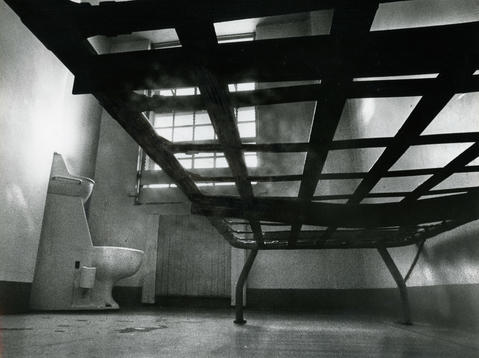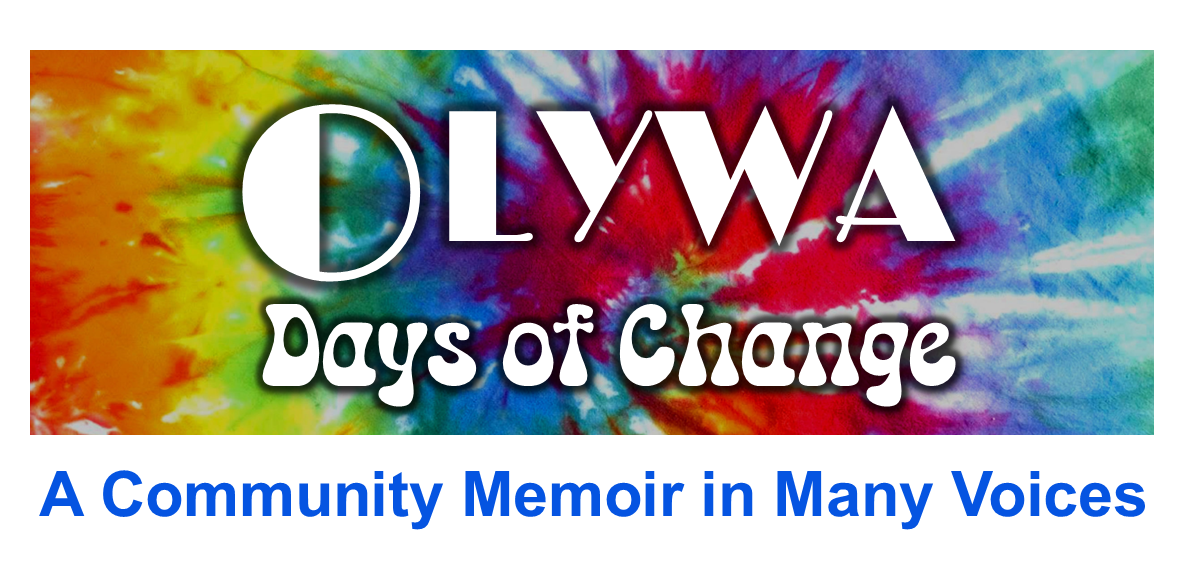FIRST PEOPLES
The Occupation of Cascadia in Tacoma – A Solidarity Action – 1976
By Susan Davenport
Word travels fast through social media. Move On and other activist connecting points on the Internet have mobilized thousands in a matter of hours or days for political action. It is difficult to remember how the word was spread to mobilize people four decades ago. We had phone trees and word of mouth and newsletters if there was enough time in the planning.
In piecing together this story I tried to recall how our collective household got the word out that activists and students were gathering at the bus circle to catch a borrowed Evergreen State College van to go to an occupation. I just remember a person coming in our back door saying basically, “Come on! There’s a solidarity action going on.”

The purpose was to bring as many witnesses and occupiers of the Cascadia Building in Tacoma as could be mobilized on short notice. The action was in solidarity with the Puyallup Tribe of Indians who were reclaiming the old juvenile detention center and former tuberculosis hospital built on Puyallup tribal land. The stated intention was to take over the old institution and create an Indian health clinic.
I and a couple of housemates took the city bus out to Evergreen. A college van pulled up in the circle (back then students had full access to college vehicles and equipment, no questions asked). People doubled up on the bench seats to fit us all in. On the way to Tacoma some of the people who were more informed educated the rest of us about our role, expectations for our behavior, and the possibility of being arrested. Some basics of civil disobedience were suggested. We were encouraged to maintain a peaceful, nonviolent presence to avoid making the Native Americans the brunt of any police reaction.
One tactic for the occupation was to ensure that the building was full of people before any authorities were aware of what was occurring. This was why there was short notice of the event. It also meant that before our “sit-down” presence was established, we could nonchalantly explore the building.
Reverberating echoes moved through the corridors as people ran up and down concrete stairwells, opening doors into large empty rooms, taking in the stark institutional atmosphere of the last use of the building as a juvenile detention center.
I was in a small group that went down into the basement to see what we could see. There were lights on throughout the building but, for some reason, not in the basement. Someone had a flashlight and shined it into one of the rooms at the bottom of the stairs along a hallway full of doors. There was a collective gasp of horror as we took in the sight of a literal torture chamber containing a steel bed with restraints in the middle of the bare room and additional restraints on the wall. There was no need for any of us to go any further down the hallway.
A more solemn group than ours could not be found as we rejoined the larger gathering. This was a galvanizing moment for me. The wresting of this building from the municipal authorities became paramount. I had a sob in my chest when the discussion of possible arrest came up again, but I would willingly get arrested to repurpose Cascadia for the life-affirming health clinic to cleanse it of whatever cruelties had occurred there.
We encourage readers to use the form below to make comments and suggestions. Disclaimer
